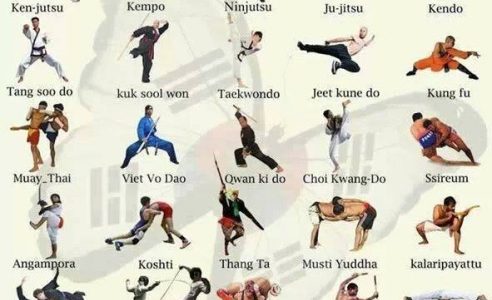Comprehending The Fundamentals And Importance Of Taekwondo Patterns
Comprehending The Fundamentals And Importance Of Taekwondo Patterns
Blog Article
Write-Up Created By-Stein Lara
Did you know that there are over 20 different taekwondo types, each with its own special sequence of motions and techniques? These types, likewise referred to as poomsae, play a vital function in the practice and development of taekwondo professionals.
However just what are these forms, and why are they so considerable? In this discussion, we will discover the basics of taekwondo forms, their beginnings, and the crucial elements that make them an integral part of this fighting style.
Whether you're a novice or a seasoned professional, understanding the relevance of taekwondo types will grow your appreciation for this ancient technique and enhance your journey towards mastery.
Origins and Development
The beginnings and advancement of Taekwondo can be traced back to old fighting styles practices in Korea. It was established over 2,000 years earlier and has actually given that grown into a prominent and globally recognized sporting activity.
Taekwondo was greatly affected by different Korean martial arts styles, such as Taekkyon and Subak, as well as Chinese martial arts. It was initially made use of as a means of self-defense, but over time, it progressed into a competitive sport that concentrates on striking strategies and high kicks.
In the 20th century, Taekwondo undertook a substantial makeover and was standardized right into its modern-day form. Source Webpage played an essential role in this process, aiding to establish policies, strategies, and forms that are still complied with today.
Key Elements and Methods
Currently allow's discover the fundamental facets and techniques of Taekwondo. To totally recognize the key elements and techniques, it is necessary to dive deeper into the following subtopics:
- Positions: Taekwondo emphasizes the correct use of positions, such as the front position, back position, and steed stance. These positions offer security, balance, and power in executing different strategies.
- Strikes and Kicks: Taekwondo is renowned for its effective and vibrant kicks, consisting of the front kick, roundhouse kick, and side kick. Strikes, such as punches and knifehand strikes, are additionally important methods in Taekwondo.
- Blocks and Defense: Efficient protection is critical in Taekwondo. global martial arts - chapter 75 , such as the high block and low block, are utilized to secure against incoming strikes. Correct timing and positioning are vital to efficiently protecting oneself.
Advantages and Effect
Among the substantial advantages of practicing Taekwondo is the enhancement of fitness and overall well-being. By participating in routine training sessions, you can improve your cardio health and wellness, stamina, flexibility, and endurance. Taekwondo entails a selection of motions that target different muscle groups, aiding you develop a strong and toned figure.
Additionally, this fighting style advertises mental health by lowering tension and anxiousness levels. The technique and focus needed in practicing Taekwondo can assist improve your focus and enhance your ability to handle difficult circumstances.
In addition, the technique of Taekwondo instills a feeling of positive self-image, self-discipline, and self-constraint, which can favorably influence various areas of your life. In general, exercising Taekwondo can bring about a much healthier and extra well balanced way of life.
Conclusion
So there you have it! Taekwondo forms aren't simply plain routines, but a depiction of the abundant history and development of this martial art. By understanding the key elements and methods, specialists can reap numerous physical and mental advantages.
From boosted simply click for source and strength to enhanced emphasis and technique, taekwondo forms have a long-term effect on those that practice them.
So, whether you're a beginner or a seasoned martial musician, accept the power of these forms and let them take you on a trip via time.
